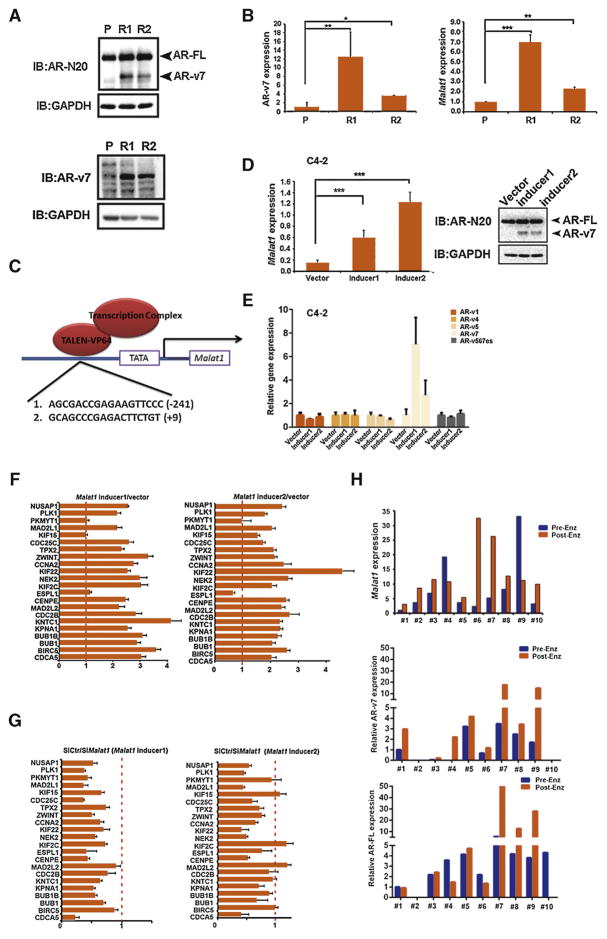Fig. 1.
Enzalutamide (Enz) treatment results in higher expression of the androgen receptor splicing variant 7 (AR-v7) and Malat1. (A) AR-v7 expression is higher in Enz resistant cell lines (R1 and R2) compared with parental (P) cells, using Western blotting to measure full length androgen receptor (AR-FL) and AR-v7 with AR-N20 and AR-v7 specific antibody, respectively, while glyceraldehyde 3-phosphate dehydrogenase (GAPDH) was used as a loading control. (B) The quantitative polymerase chain reaction (qPCR) analysis suggests Malat1 (right) and AR-v7 messenger RNA (left) were dramatically increased after cells acquired Enz resistance. (C) Cartoon showing transcription activator-like effector (TALE) targeting sites on the Malat1 promoter. (D) TALE-based transactivation induces Malat1. Left, Malat1 expression after TALE-based transcription factors were transduced into C4-2 cells. Right, AR-FL and AR-v7 were detected by western blotting in two cell populations infected with Malat1 inducers. (E) AR variants were detected by qPCR in two Malat1-inducers-infected cells. (F) Malat1-expressing cells showed AR-v7 gene signature. Cell cycle genes regulated by AR-v7 were tested with qPCR in Malat1-expressing cells that were induced by TALE expression. (G) The short interfering Malat1 (siMalat1) reversed the induced expression of AR-v7 target genes in cell lines. (H) Malat1, AR-v7, and AR-FL expression in circulating tumor cells of metastatic castration-resistant prostate cancer patients before (Pre-Enz) and after (Post-Enz) Enz treatment (n = 10).
* p < 0.05.
** p < 0.01.
*** p < 0.001.

